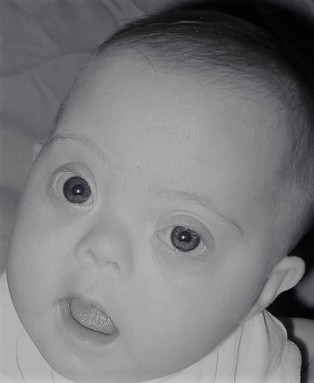“Do you know what hurts so very much? It’s love. Love is the strongest force in the world, and when it is blocked that means pain. There are two things we can do when this happens. We can kill that love so that it stops hurting. But then of course part of us dies, too. Or we can ask God to open up another route for that love to travel.” Corrie ten Boom
The World’s Plan
The Holocaust, HaShoah, “the catastrophe” of World War II, was responsible for eleven million deaths. Besides killing nearly two-thirds of the Jews who had resided in Europe, there were five million non-Jewish victims including ethnic Poles, Soviet citizens, POWs, other Slavs, the disabled, Romani, Communists, homosexuals, Freemasons, and Jehovah’s Witnesses.
The Nazi government instituted laws which called for the sterilization of all persons with signs of disability—including conditions such as mental illness, learning disabilities, physical deformity, epilepsy, blindness, deafness, and alcoholism. The Third Reich also stepped up its propaganda against people with disabilities, regularly labeling them “life unworthy of life” or “useless eaters” and highlighting their burden upon society.
The persecution of people with disabilities escalated even further when Adolf Hitler authorized a program of “mercy death.” The killings secretly continued until the war’s end, resulting in the murder of an estimated 275,000 people with disabilities.

A Woman’s Plan
The ten Boom family lived in Haarlem, Holland, where Corrie came from a long line of watchmakers. She learned the trade and became the first woman licensed in Holland as a watchmaker. She also engaged in social work, organizing girls’ clubs and groups for families with developmentally disabled children. On seeing what was happening in Holland under the National Socialist regime, especially the unrelenting persecution of Jews, she decided that she needed to do something about it. Corrie devised a way to assist the Jews. In this manner, she could “resist” the Nazis, but in her unique way, without violence, fully in agreement with her Christian principles and belief.
What was her plan? Initially it was to aid refugees persecuted by the Nazi regime—providing temporary shelter to aid escape to safety. Soon the ten Booms were faced with refugees who were difficult to place in other safe houses—people too old or too sick to travel or with such strongly Semitic features that they could not be disguised safely. This single, fifty-year-old woman decided to provide some permanent shelter, so they constructed the “hiding place” in Corrie’s third-floor bedroom—the furthest point from the door where searching police might enter. Eventually a core group of seven fugitives joined their family household along with the steady flow of visitors who would stay for just a few nights. As Jews started to be arrested and their property seized, the ten Boom family joined the Dutch Underground in assisting Jews to escape.
When the German army invaded and occupied Holland, the Nazis banned Corrie’s girls’ clubs, and heavy restrictions fell upon the Jews of Holland. Corrie helped secure food ration cards that were only supposed to be given to non-Jews. Corrie took the illegally gained ration cards and distributed them to help feed the Jews in hiding.
When the ten Booms were sheltering a family with a baby, the pastor of a church outside Haarlem visited them. When asked if the pastor would shelter the baby’s family in his home for the next step of their journey to freedom, the pastor replied, “Definitely not! We could lose our lives for that Jewish child!” Corrie’s father Casper ten Boom picked up the baby and held it tenderly in his arms, “You say we could lose our lives for this child. I would consider that the greatest honor that could come to my family.”

The ten Boom family not only hid the Jews but honored the Jewish culture and faith. The entire household kept the Sabbath. They celebrated Hanukkah. The graciousness of these Jews and Christians living intimately together (under grave threat) brought much joy and even humor amid the fear and anxiety.
In February 1944, someone betrayed the family to the German Gestapo. The house was raided, and a trap set to seize anyone who came to the house throughout the day. Thirty people were arrested, but the hiding place was not found. The four Jews and two Dutch Underground workers who had been hustled into the hiding place stayed in that cramped wall cavity for two days until the Underground finally rescued them.
Corrie ten Boom and her family were taken to a series of prisons and concentration camps. Her father died within ten days at Scheveningen Prison. Corrie’s nephew died in Bergen-Belsen. Her brother Willem died shortly after the war from tuberculosis he contracted in prison. Corrie and her sister Betsie were sent to the notorious Ravensbruck concentration camp where Betsie died. On December 30, 1944, Corrie ten Boom was freed on what appeared to be a clerical error. She spent the rest of the war recovering from the deprivations she had suffered.
God’s Plan
Following the war, Corrie established rehabilitation centers for disabled people and for survivors of the Nazi concentration camps and prisons. Surely you know of Corrie ten Boom and her message of forgiveness and reconciliation that became the “key which unlocks the door of resentment and the handcuffs of bitterness.”
One woman.

Alice, I didn’t remember that Hitler killed the disabled like that. Corrie and her family were so brave in such terrible times. I wrote a play for Sunday School about “The Hiding Place–it was the most challenging one we did–and so rewarding.
LikeLiked by 1 person
In reading about Corrie ten Boom again, I was struck with her perseverance and sense of calling–before the war, during the war, and afterwards. I hope you dust off that play and produce it again soon–another generation is in need of meeting Corrie.
LikeLike